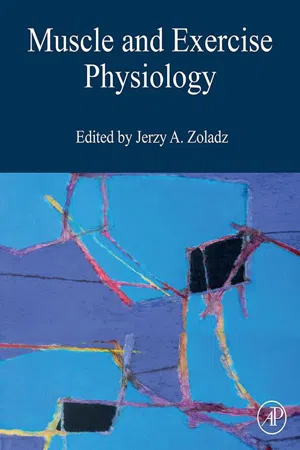
- 618 pages
- English
- ePUB (mobile friendly)
- Available on iOS & Android
Muscle and Exercise Physiology
About This Book
Muscle and Exercise Physiology is a comprehensive reference covering muscle and exercise physiology, from basic science to advanced knowledge, including muscle power generating capabilities, muscle energetics, fatigue, aging and the cardio-respiratory system in exercise performance. Topics presented include the clinical importance of body responses to physical exercise, including its impact on oxygen species production, body immune system, lipid and carbohydrate metabolism, cardiac energetics and its functional reserves, and the health-related effects of physical activity and inactivity. Novel topics like critical power, ROS and muscle, and heart muscle physiology are explored.
This book is ideal for researchers and scientists interested in muscle and exercise physiology, as well as students in the biological sciences, including medicine, human movements and sport sciences.
- Contains basic and state-of-the-art knowledge on the most important issues of muscle and exercise physiology, including muscle and body adaptation to physical training, the impact of aging and physical activity/inactivity
- Provides both the basic and advanced knowledge required to understand mechanisms that limit physical capacity in both untrained people and top class athletes
- Covers advanced content on muscle power generating capabilities, muscle energetics, fatigue and aging
Frequently asked questions
Information
Muscle Energetics
Abstract
Keywords
Acknowledgments
5.1 Introduction
5.2 The Basic Metabolism and Physiology of Skeletal Muscle Energetics

5.2.1 ATP Turnover
Table of contents
- Cover image
- Title page
- Table of Contents
- Copyright
- Dedication
- List of Contributors
- Preface
- Section I: Skeletal Muscle Morphology
- Section II: Muscle Energetics and Its Performance
- Section III: Muscle Metabolism and Exercise Physiology
- Section IV: Body Adaptation to Exercise
- Section V: Heart Muscle and Exercise
- Index